FAQs: Connecting patients at crossroads in care
Home » FAQs: Connecting patients at crossroads in care
FAQs: Connecting patients at crossroads in care
Home » FAQs: Connecting patients at crossroads in care

Home » FAQs: Connecting patients at crossroads in care
Home » FAQs: Connecting patients at crossroads in care

SCP Health Thought Leadership
November 14, 2024
A. An increasing number of patients expect virtual access to nurses and clinicians – for care appointments, to ask questions about medications, or to seek medical advice. Patients need and want more information, support in navigating the system, and access to care. Without that support, patients often feel frustrated and disconnected from their care, which can have an impact on their overall health outcomes.
A. Many organizations are trying to do patient engagement effectively, but with the heavy lift of live phone calls, which gets very expensive, very fast. There’s no system to create closed feedback or reporting to get the information to the person who can take action. What’s needed most are clinically integrated technology solutions that connect back to EMR, allow the opportunity for closed loop reporting, and exist at the cost position you need to be able to make it work. These types of solutions are becoming available in the market now.
A. A program like our Connected Care solution integrates with and complements the hospital’s current strategies to expand the reach and impact of clinical and non-clinical patient support resources, increasing the rate of patient engagement, reducing avoidable readmissions, and improving HCAHPs.
Research from multiple external sources, including Harvard Business Review and Deloitte) show that just a 5% increase in HCAHPS scores is correlated to a 1% increase in operating margin for hospitals.
Learn more about SCP’s programs and solutions. Talk with one of our experts today.
Sign up for our newsletter to receive the latest updates and exclusive content straight to your inbox.

A physician-led team of clinical specialists in emergency, hospital, and critical care medicine, supporting local clinical practices with national resources to deliver high-quality patient care in the communities we serve.
Corporate Phone: (800) 893-9698
Copyright © 2025. All rights reserved.
Please visit SCP Health’s Insurance Request Portal to submit requests related to medical malpractice liability insurance such as coverage verifications, claims history reports, and certificates of insurance. If you experience issues with the portal submission or have a question about the process, please reach out SCP Health’s Risk Management, Safety and Insurance Department at RM@scphealth.com or 337-609-1250.
By clicking the “Submit” button, you are agreeing to the SCP Heath Terms of Use and Privacy Policy
By clicking the “Submit” button, you are agreeing to the SCP Heath Terms of Use and Privacy Policy
By clicking the “Submit” button, you are agreeing to the SCP Heath Terms of Use and Privacy Policy
By clicking the “Submit” button, you are agreeing to the SCP Heath Terms of Use and Privacy Policy
By clicking the “Submit” button, you are agreeing to the SCP Heath Terms of Use and Privacy Policy
By clicking the “Submit” button, you are agreeing to the SCP Heath Terms of Use and Privacy Policy
By clicking the “Submit” button, you are agreeing to the SCP Heath Terms of Use and Privacy Policy
By clicking the “Submit” button, you are agreeing to the SCP Heath Terms of Use and Privacy Policy
By clicking the “Submit” button, you are agreeing to the SCP Heath Terms of Use and Privacy Policy
By clicking the “Submit” button, you are agreeing to the SCP Heath Terms of Use and Privacy Policy
Please provide your contact information. An SCP representative will contact you accordingly.